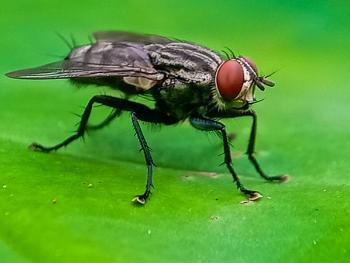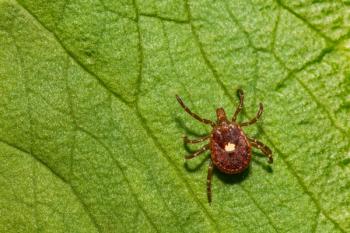
- dvm360 April 2019
- Volume 50
- Issue 4
Dangerous new tick species migrating to North America
Researchers predict widespread invasion of a tick species in the United States and neighboring countries, posing a significant threat to public health and livestock.
Dr. Ram Raghavan, a spatial epidemiologist at Kansas State University, collects longhorned ticks near Queensland, Australia, where he spent a month studying the natural habitats and wildlife hosts of longhorned ticks. Of the nearly 900 tick species found around the world, about 90 make their home in the
According to spatial epidemiologist Ram Raghavan, BSc, MS, PhD, an assistant professor at Kansas State University College of Veterinary Medicine and lead author of the
Where are the danger zones?
Indeed, the invasion has
The Asian longhorned tick.
Using multiple spatial distribution models, Dr. Raghavan and his team evaluated the likelihood of this dangerous tick migrating to other areas of the continent.
“We have identified vast areas of North America, particularly the southeastern U.S., the West Coast and broad areas of the northwestern U.S., as well as central and southern Mexico, as climatically suitable for establishment of this species,” says Dr. Raghaven in a K-State press release.
Native to Japan, China, Korea and the Primorsky Krai region of eastern Russia, the species has so far become well established in Australia, New Zealand and on several Pacific Islands. Female longhorned ticks can reproduce asexually-a rare trait that allows for rapid population spread-and the species can thrive under diverse climatic conditions.
Data from the CDC indicate that
What would an invasion mean?
According to Stephen Barker, BSc, PhD, parasitologist and professor at the University of Queensland and a study coauthor, widespread invasion of H. longicornis in the United States “would carry a significant economic burden and potential human suffering, especially since this tick is capable of transmitting a variety of pathogens such as those cause Lyme disease and others.”
Tick migration is facilitated greatly by travel, with livestock, dogs and people all potential unwitting carriers. “We feel that there is a need for strict inspection and quarantine of cattle, other livestock and pet animals, particularly dogs, about to be transported from the current focus areas of this tick,” Dr. Raghavan says. “High levels of interstate movement of livestock and other animals occur each day. Cattle are moved slowly across the nation, stopping at multiple places-potentially dropping off female ticks. The movement of ticks via livestock and other domestic animals is not currently monitored or regulated, so it is only a matter of time, in our opinion, that this species will spread further in North America.”
Articles in this issue
over 6 years ago
Commentary: Alvins trip to the veterinarianalmost 7 years ago
New initiative aims to spread heartworm awareness, actionalmost 7 years ago
The future of veterinary medicinealmost 7 years ago
Laser therapy dosing explainedalmost 7 years ago
Can't we just sit tight sometimes?almost 7 years ago
dvm360 Hospital Design Competition announces 2019 winnersalmost 7 years ago
Reexamining the early spay-neuter paradigm in dogsalmost 7 years ago
Petplan gives North American awards at VMXalmost 7 years ago
Letter to dvm360: More options for intestinal parasite controlNewsletter
From exam room tips to practice management insights, get trusted veterinary news delivered straight to your inbox—subscribe to dvm360.




